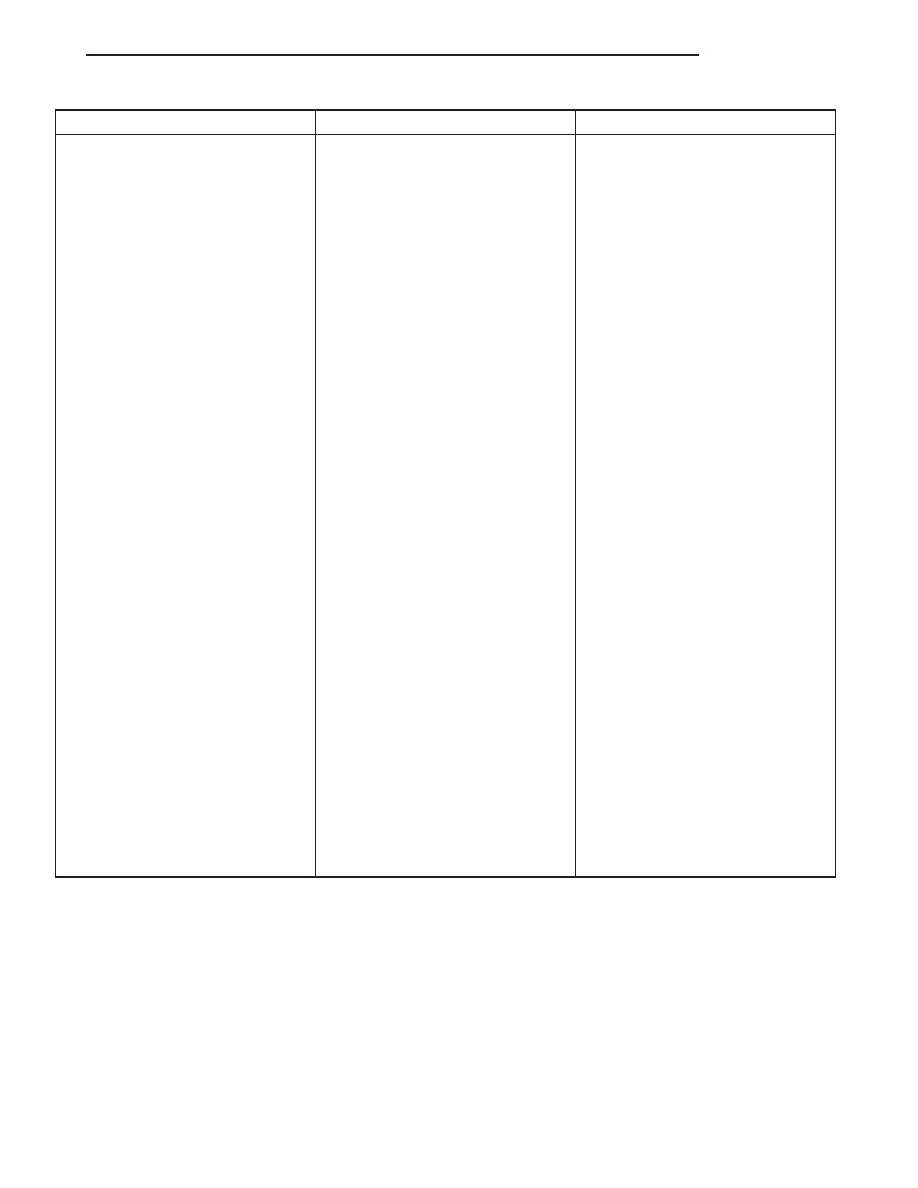Jeep Wrangler TJ. Manual - part 261

CONDITION
POSSIBLE CAUSES
CORRECTION
9. Coolant not flowing through system
9. Check for coolant flow at radiator
filler neck with some coolant removed,
engine warm and thermostat open.
Coolant should be observed flowing
through radiator. If flow is not
observed, determine area of
obstruction and repair as necessary.
10. Radiator or A/C condenser fins
are dirty or clogged.
10. Remove insects and debris.
(Refer to 7 - COOLING - STANDARD
PROCEDURE).
11. Radiator core is corroded or
plugged.
11. Have radiator re-cored or
replaced.
12. Fuel or ignition system problems.
12. Refer to 14 - Fuel System or 8 -
Electrical for diagnosis and testing
procedures.
13. Dragging brakes.
13. Check and correct as necessary.
(Refer to 5 - BRAKES - DIAGNOSIS
AND TESTING) for correct
procedures.
14. Bug screen or cardboard is being,
reducing airflow.
14. Remove bug screen or cardboard.
15. Thermostat partially or completely
shut.
15. Check thermostat operation and
replace as necessary. (Refer to 7 -
COOLING/ENGINE/ENGINE
COOLANT THERMOSTAT -
REMOVAL).
16. Viscous fan drive not operating
properly.
16. Check fan drive operation and
replace as necessary. (Refer to 7 -
COOLING/ENGINE/FAN DRIVE
VISCOUS CLUTCH - REMOVAL) .
17. Cylinder head gasket leaking.
17. Check for cylinder head gasket
leaks. (Refer to 7 - COOLING -
DIAGNOSIS AND TESTING).
18. Heater core leaking.
18. Check heater core for leaks.
(Refer to 24 - HEATING & AIR
CONDITIONING/PLUMBING -
DIAGNOSIS AND TESTING). Repair
as necessary.
TJ
COOLING
7 - 5
COOLING (Continued)